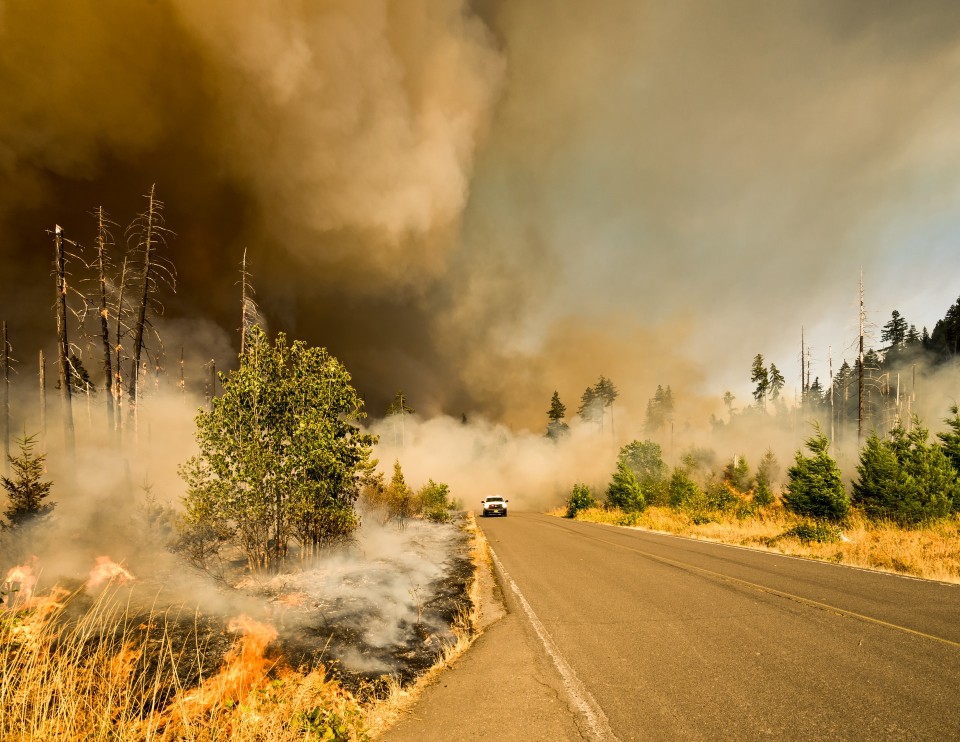
Heavy Rain, Flooding, and Chance of Severe Weather Staring Down the Southern U.S.
January 22, 2024
Posted: May 6, 2021 3:07 pm





After last year’s devastating wildfire season, residents of the West Coast are bracing for what may lie ahead in 2021. Unfortunately, the news is not all that good for people hoping that this year will offer a reprieve from the danger. Here is a look at the factors that are setting the stage for another historic season of wildfires in the western half of the nation.
The biggest contributing factor to the severity of a wildfire season is how much precipitation an area has received in the months leading up to the height of the risk. Heading into May, over 75% of the western US is experiencing some level of drought. Of this percentage, 21% is listed as under exceptional drought. This categorization is the most severe level as reported by the US Drought Monitor.
Fire season unofficially runs May through October. However, there have already been wildfires that popped up in April in many of the most drought-stricken areas. In addition, as last year’s season demonstrated, November can also be a particularly dangerous month for wildfire eruptions.
The 2021 fire season is predicted to burn through approximately 9.5 million acres in the western US alone. If this prediction comes to fruition, this acreage would be 130% of the five-year average burned and 140% of the 10-year average.
Forecasters are also worried that the bulk of the fire season will get going earlier than normal. This fear is rooted in the fact that the drought conditions have been so persistent, setting the stage for a head start to the wildfire danger.
A warmer than average spring throughout Arizona and New Mexico may mean that this region sees the first of the significant outbreaks. A relatively dry spring could also spell trouble for Washington and Oregon, with fires expected to ignite at an earlier interval.
One area that may catch a break from a devastating fire season may be Southern California. Although the region is also under serious drought conditions, last year’s destructive fires have taken away the opportunity for the brush to grow and spread. In a twist of irony, this means that the ongoing drought may actually serve as a protective barrier for future blazes.
In a typical wildfire season, the danger starts in the southern tier of the country and spreads northward as the summer progresses. This is because the southwestern states begin to see rising temperatures before the northern tier of the West Coast. For example, fire activity in Northern California and the Pacific Northwest generally does not ramp up until late summer and early fall.
As is always the case, lightning will pose a major risk in the development of wildfires. While many of the largest wildfires are man-made, Mother Nature is also a significant contributor to the blazes. In addition to lightning strikes, strong winds are a culprit of the spread of the fires.
These winds whip up off the Pacific coast and move into the region most prone to wildfires. The Santa Ana winds of Southern California also pose an issue when dry conditions are present. It does not take a lot of wind to create explosive conditions for fire development.
The Sundowner winds are often to blame for the fires early in the season. These particular winds pick up during the sunset hours, blowing down from the Santa Ynez Mountains to the coast of Santa Barbara County. While Santa Ana winds generally occur in the late fall and early winter months, these Sundowner winds are the most prevalent during the late spring and early summer months.
The year 2020 saw over 4.3 million acres burn just in California. This figure was more than double the Golden State’s previous record. What is most alarming to meteorologists is that three of California’s four most damaging fire seasons happened over the last five years, signaling that this is indeed a growing problem.
The problem was not limited to California. The state of Colorado also experienced a record-breaking wildfire season in 2020 with four of the biggest fires in state history taking place. Over 625,000 acres were charred as a result of the towering flames that ripped through the Rocky Mountains and beyond.
Other states that experienced record fires included Oregon, Washington, Utah, Wyoming, New Mexico, and Arizona.

January 21, 2024

January 19, 2024

January 18, 2024